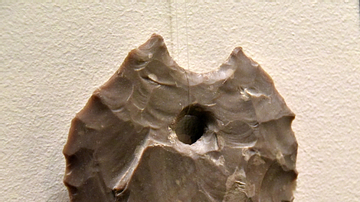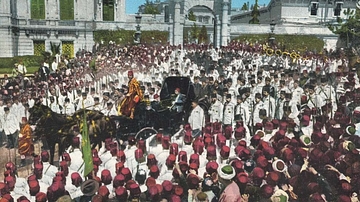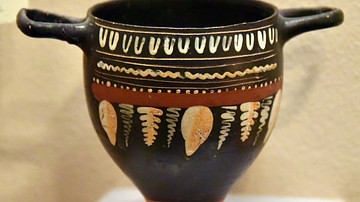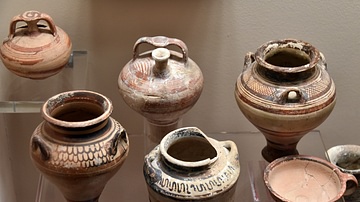Illustration
This type is similar to the ones used for infant burials, but this one is painted with red strips using iron oxide (hematite), material already known during the Neolithic period for coloring plaster. The Jar was carefully made on a straw mat or tray, the impression of which is preserved under the base. Thus, another form of handcraft reached us although most of the artifacts made of organic materials, including straw, have long deteriorated. Late Chalcolithic period, 4000-3600 BCE. From Abu Hamid archaeological site, northern Jordan Valley, Jordan. (The Jordan Museum, Amman, Jordan).
About the Author
Cite This Work
APA Style
Amin, O. S. M. (2019, February 25). Decorated Pottery Jar from Abu Hamid. World History Encyclopedia. Retrieved from https://www.worldhistory.org/image/10060/decorated-pottery-jar-from-abu-hamid/
Chicago Style
Amin, Osama Shukir Muhammed. "Decorated Pottery Jar from Abu Hamid." World History Encyclopedia. Last modified February 25, 2019. https://www.worldhistory.org/image/10060/decorated-pottery-jar-from-abu-hamid/.
MLA Style
Amin, Osama Shukir Muhammed. "Decorated Pottery Jar from Abu Hamid." World History Encyclopedia. World History Encyclopedia, 25 Feb 2019, https://www.worldhistory.org/image/10060/decorated-pottery-jar-from-abu-hamid/. Web. 18 Apr 2025.








